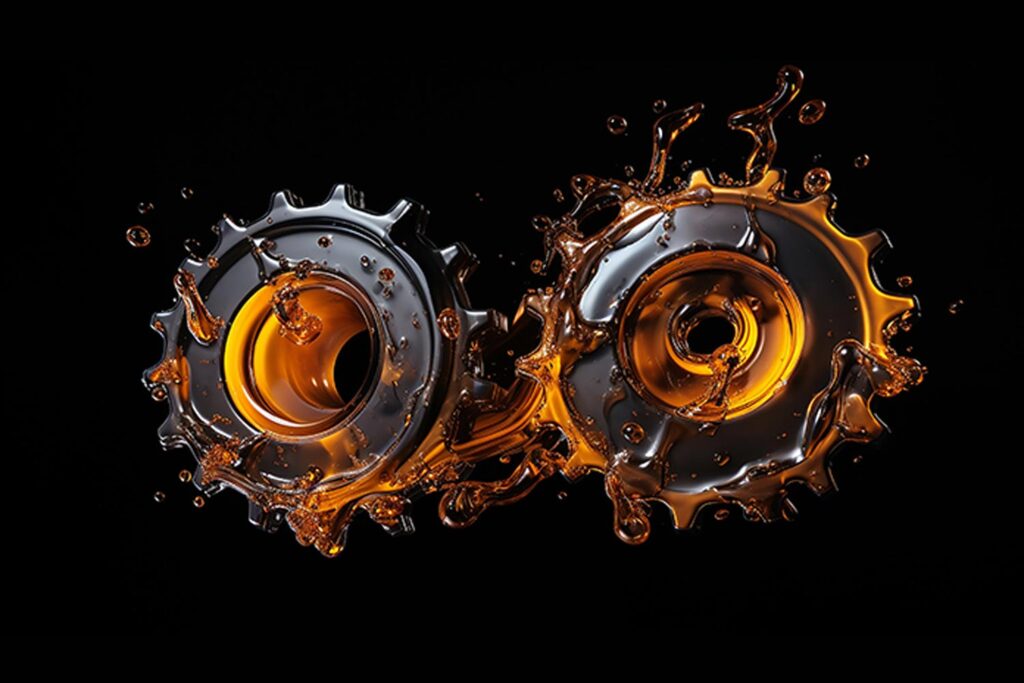 Source: American Rider –
Source: American Rider –
Oil is a drag. The stuff is messy and behaves inconsistently in different situations and at different times and temperatures. In this installment of Tech Tips, we take a deeper dive into motorcycle engine oils.
A key element to oil serving its purpose is the types of bearings used inside engines: roller or plain. Harley motors (aside from the liquid-cooled ones) and most Indians use rolling element bearings with low-pressure, high-volume lubrication systems. These bearings need very little oil and have their highest load ratings sitting still.
Meanwhile, Harley V-Rods and the recent liquid-cooled RH Sportster and Pan America models are just the opposite, using plain bearings predominantly and requiring high pressure for proper lubrication. In these engines, including liquid-cooled Indians, a wedge of oil film between the bearings and the rotating surfaces is essential, and this hydrodynamic function means the bearing will handle the greatest load at high engine speeds. Different designs, different requirements, same oil.

Moisture can be a problem, causing oil to fail in its protective tasks. Next time you take a ride, check your oil to see if the fluid looks like chocolate milk, a sure sign condensation has permeated the lubricant. This is equally true in the primary, gearbox, and engine.
If you get your engine fully up to temperature and the oil reverts to a normal look and smell, the moisture has at least partially boiled out, and your engine probably dodged a bullet. Moisture-laden lubricant should be drained and replaced with fresh clean oil. Caution: Changing oil before moisture has boiled out of the old lube adds latent moisture into fresh oil.
An oil change every 5,000 miles should be considered a guideline, not gospel. Usage and conditions can negatively affect oil in fewer miles than that. Historically, H-D has rated their petroleum motor oil in hours of protection. It reckons that a change is due after 360 hours. Keep in mind that using mileage or operational hours isn’t a substitute for actually checking your oil.
Related: Tech Tips: Motorcycle Oil – A Slippery Subject
It’s a good idea to check oils every second or third time you fuel up. If any of it smells bad or looks bad – regardless of mileage – change it! Riding in hot weather or in stop-and-go traffic or racing will reduce oil life, so take those factors into account. Synthetics last longer before deterioration.
Related: Tech Tips: Synthetic Oil – A Slippery Subject, Part 2
Semi-synthetic, full synthetic, 100% synthetic? Many years ago, Mobil sued Castrol over the labeling of synthetic oils. Mobil used 100% synthetics in its oils, but Castrol was selling a blend of synthetic and mineral oil. Castrol won, with the strange result that oils can be labeled “full” synthetic even if only 60% of their base stock is synthetic. Oils labeled semi-synthetic must have at least 30% synthetically sourced lube.
The final aspect of oils to be aware of are the additives inside. When the sacrificial elements in oil’s additives package have done their job, they mostly wind up in the oil filter and are disposed during oil and filter changes. But that’s not the whole story.
Once a few dozen quarts have been through your engine, these dead additives accumulate like sediment in the bottom of a lake, gathering in the oil tank, sump, primary case, and the bottom of the gearbox. To ensure reliability and longevity of your beloved engine, it’s smart to purge and clean these areas after 50,000 miles.
The post Tech Tips: Oil – The Final Chapter appeared first on American Rider.




